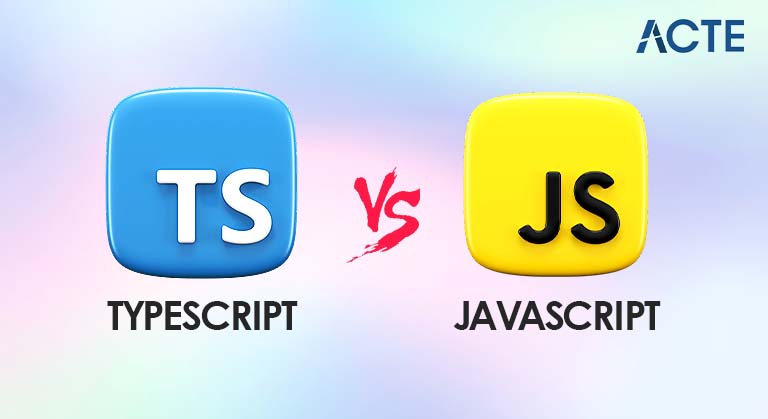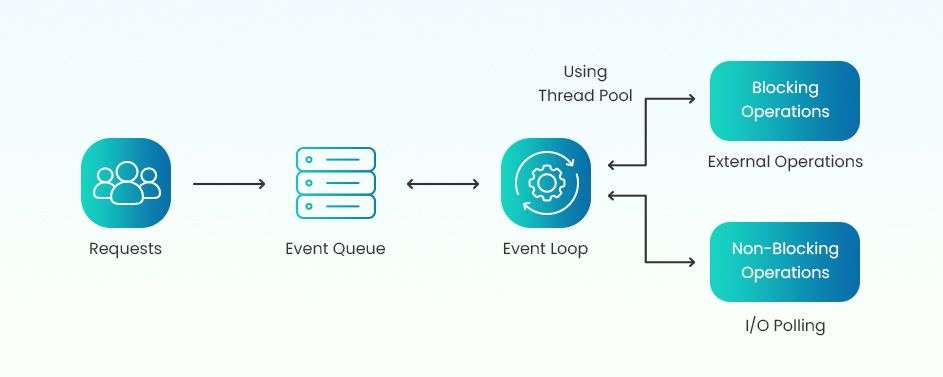
- Introduction
- JavaScript Basics
- Node.js Overview
- Core Differences Between Node.js and JavaScript
- Use Cases for Node.js
- Use Cases for JavaScript
- Performance Comparison
- When to Use Node.js and When to Use JavaScript
- Future of Node.js and JavaScript
- Conclusion
Introduction
In software development, the terms “JavaScript” and “Node.js” are often heard together, but they represent distinct concepts in the realm of programming. While both are related and frequently used in tandem, understanding their differences is crucial for making informed decisions when developing applications. JavaScript has long been a foundational technology for web development, enabling dynamic behavior in web browsers. At the same time, Node.js brings JavaScript’s power to the server side, allowing the developers to use a single language throughout their full-stack development. This comparison explores the basics of JavaScript and Node.js, highlighting their differences, use cases, performance considerations, and when to choose one.
Excited to Achieve Your Business Analyst Certification? View The Business Analyst Online course Offered By ACTE Right Now!
JavaScript Basics
JavaScript is a high-level, interpreted programming language initially created for web browsers to add interactivity to websites. Since its introduction in 1995 by Netscape Communications, JavaScript has evolved to become one of the world’s most popular and widely used programming languages. It is the primary language for client-side scripting, meaning it is executed in the user’s browser to control dynamic content like animations, form validation, and interactive UI elements. One of its strengths is versatility and support for multiple programming paradigms. These features make it useful even in Web Developer Training for better collaboration with developers. One of JavaScript’s defining features is its versatility and support for multiple programming paradigms. It can be used for functional, object-oriented, and event-driven programming. JavaScript’s flexibility allows it to be used in many contexts, from enhancing static web pages to creating entire web applications. JavaScript is primarily used in web development to create interactive elements on websites. It works alongside HTML (Hypertext Markup Language) and CSS (Cascading Style Sheets) to create dynamic and responsive user interfaces. It can also be used for mobile development through frameworks like React Native, and more recently, JavaScript has made its way to the server side thanks to the development of Node.js.
Node.js Overview
Node.js is an open-source runtime environment that allows developers to run JavaScript outside the browser. It is built on the V8 JavaScript engine (the same engine used by Google Chrome), which enables fast execution of JavaScript code. Ryan Dahl created Node.js in 2009 to address the need for a non-blocking, event-driven server platform capable of handling numerous concurrent connections efficiently. One of Node.js’s key features is its asynchronous, event-driven architecture, which allows for non-blocking I/O operations. This means that when Node.js performs tasks such as reading from a database, accessing the file system, or making network requests, it doesn’t wait for these tasks to complete before moving on to the next one an essential concept emphasized in Web Developer Training. Instead, it registers callbacks that are triggered once the task finishes, thus avoiding the blocking behavior seen in traditional synchronous models. Node.js is particularly suited for building scalable network applications like web servers, APIs, and real-time applications like chat platforms or online games. Its ability to handle many concurrent connections with minimal overhead makes it a popular choice for developers who need performance and efficiency.

Core Differences Between Node.js and JavaScript
Environment: JavaScript is a language used to create scripts that run in web browsers. It is the standard language for client-side scripting, meaning it runs on the user’s device, executing code that interacts with HTML and CSS. On the other hand, Node.js is a runtime environment that allows developers to run JavaScript code on the server side. It enables JavaScript for tasks traditionally handled by server-side programming languages, such as Python, Ruby, or PHP.
Execution Context:
JavaScript is typically executed in the browser’s Java Script engine (e.g., V8 in Chrome or SpiderMonkey in Firefox), allowing it to interact with the DOM (Document Object Model) and manipulate the webpage’s content. Node.js executes JavaScript code on the server. It uses the V8 engine, but in contrast to JavaScript running in the browser, it provides APIs to interact with the file system, create HTTP servers, manage databases, and handle system-level tasks.
APIs and Libraries:
JavaScript in the browser is limited to the APIs provided by the browser itself. These include APIs for interacting with the DOM, handling events, and making asynchronous HTTP requests (e.g., through XMLHttpRequest or fetch). Node.js provides a rich set of built-in libraries and modules that enable access to server-related functionality. This includes handling HTTP requests, reading and writing files, managing processes, working with streams, and interacting with databases.
Concurrency Model:
JavaScript in the browser traditionally uses a single-threaded event loop model. This means that JavaScript execution is carried out sequentially, with each task executed one after the other. Node.js also uses an event-driven, non-blocking I/O model, but it is designed to handle many simultaneous operations without waiting for one task to complete before moving on to the next. This makes it highly efficient for real-time Big Data Applications and systems that require concurrency.
Usage
- JavaScript is typically used for front-end development. It adds interactivity to web pages and enhances the user experience. It runs directly in the browser.
- Node.js is used for server-side development, allowing developers to build server applications such as APIs, web servers, and real-time applications.
- Real-Time Applications: Applications like chat applications, live streaming, and multiplayer games benefit from Node.js’s non-blocking I/O, allowing for real-time data updates without delay. Node.js’s ability to handle multiple connections concurrently without slowing down is a key advantage in these scenarios.
- APIs and Web Servers: Node.js excels in building lightweight, fast, and scalable RESTful APIs and web servers. Its asynchronous nature and event-driven model make it ideal for handling multiple HTTP requests at once without blocking.
- Microservices: Node.js is often used in Microservices architectures, where the application is broken down into more minor, manageable services. Node’s scalability and ability to handle many requests concurrently make it an excellent choice for creating microservices that need to communicate with one another.
- Data-Intensive Applications: Node.js’s asynchronous and event-driven architecture allows it to perform database operations quickly and without blocking other processes for applications that require frequent interaction with databases or large datasets, such as social networks, e-commerce platforms, or financial applications.
- Command-Line Tools: Node.js is also used to build command-line tools and scripts. With its vast package ecosystem (via npm), developers can easily create utilities that automate tasks or manage server-side operations.
- JavaScript in the browser is optimized for manipulating the DOM and interacting with web pages. However, since it operates within the browser’s constraints, it is typically not designed for heavy computational tasks or handling large concurrent I/O requests.
- Due to its non-blocking, event-driven nature, Node.js excels at handling many concurrent operations without blocking other tasks. This makes it highly suitable for I/O-intensive applications like web servers or real-time applications. In contrast to traditional multi-threaded servers, Node.js Architecture uses a single-threaded event loop, which reduces overhead and allows for more efficient resource usage.
- Use JavaScript when building interactive user interfaces, web applications, or mobile apps that require dynamic content manipulation on the client side. It is the go-to choice for front-end development.
- Use Node.js when building scalable, high-performance server-side applications, APIs, or real-time systems that require concurrent connections or high I/O operations.
Excited to Obtaining Your Business Analyst Certificate? View The Business Analyst Training Offered By ACTE Right Now!
Use Cases for Node.js
Node.js is well-suited for building applications requiring high concurrency, scalability, and fast I/O operations. Some everyday use cases include:
Interested in Pursuing Business Intelligence Master’s Program? Enroll For Business Intelligence Master Course Today!
Use Cases for JavaScript
JavaScript remains a dominant technology in client-side web development, playing a crucial role across various use cases. It is essential for building dynamic and responsive user interfaces by enabling developers to manipulate the DOM, handle user inputs, and update webpage content without reloading the page. JavaScript, along with popular frameworks like React, Angular, and Vue, powers sophisticated single-page applications (SPAs) that deliver a seamless, native app-like experience in the browser. Additionally, frameworks such as React Native allow developers to use JavaScript for cross-platform Mobile Development on iOS and Android, leveraging a shared codebase. JavaScript is also the primary language for creating browser extensions and plugins, enabling enhanced interactivity and functionality directly within the browser. Furthermore, it supports server-side rendering (SSR), where HTML content is generated on the server and sent to the browser, improving SEO performance and reducing initial page load times.

Performance Comparison
Performance is an essential factor when choosing between JavaScript and Node.js, as each has different performance characteristics based on the environment in which it runs.
That being said, JavaScript and Node.js each have their areas of specialization, and performance comparisons should consider the specific context in which they are used.
Getting Ready for a Business Analyst Job Interview? Check Out Our Blog on Business Analyst Interview Questions & Answer
When to Use Node.js and When to Use JavaScript
Future of Node.js and JavaScript
JavaScript and Node.js continue to evolve, with growing communities and vast ecosystems. JavaScript’s dominance in front-end development is unlikely to waver as modern frameworks and tools continuously advance, making it a cornerstone of Web Designing Training. Node.js will likely continue to expand its presence in the server-side development landscape with improvements in performance, scalability, and ecosystem support. In the future, JavaScript may become more integrated into machine learning, artificial intelligence, and IoT (Internet of Things) development while Node.js continues enhancing its server capabilities.
Conclusion
In conclusion, JavaScript and Node.js each have their unique strengths and play vital roles in modern web development. While JavaScript powers dynamic interactions on the client side, Node.js extends its capabilities to the server side, enabling full-stack development with a unified language. Understanding their differences, use cases, and how they complement each other is essential for crafting efficient, scalable, and maintainable applications that meet the demands of today’s digital landscape.


